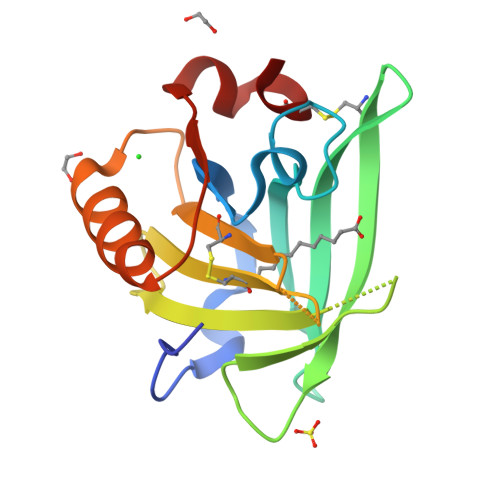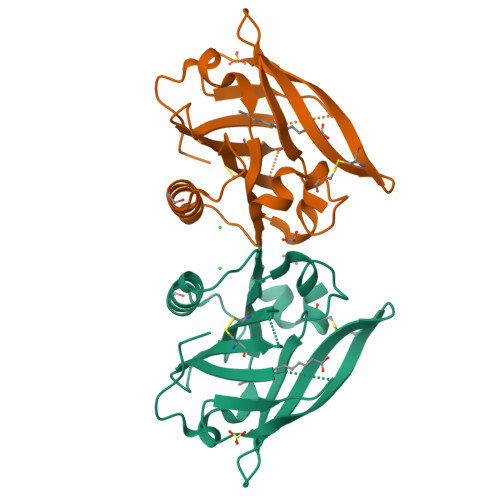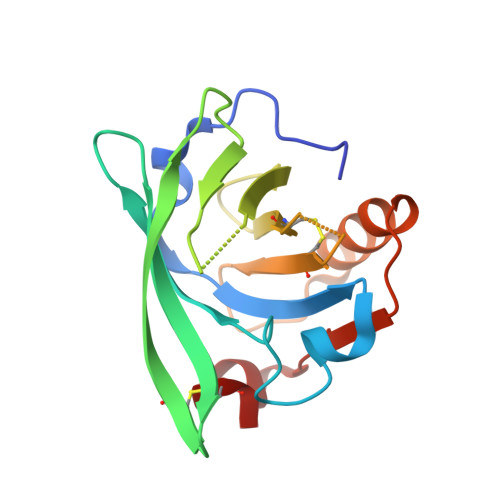beta-Lactoglobulin variants as potential carriers of pramoxine: Comprehensive structural and biophysical studies.
Bonarek, P., Mularczyk, D., Loch, J.I., Kurpiewska, K., Dziedzicka-Wasylewska, M.(2023) J Mol Recognit 36: e3052-e3052
- PubMed: 37610054
- DOI: https://doi.org/10.1002/jmr.3052
- Primary Citation of Related Structures:
7Z9Z, 7ZA0, 7ZCD, 7ZLF - PubMed Abstract:
β-Lactoglobulin (BLG) is a member of the lipocalin family. As other proteins from this group, BLG can be modified to bind specifically compounds of medical interests. The aim of this study was to evaluate the role of two mutations, L39Y and L58F, in the binding of topical anesthetic pramoxine (PRM) to β-lactoglobulin. Circular dichroism spectroscopy, isothermal titration calorimetry (ITC), and X-ray crystallography were used to understand the mechanisms of BLG-PRM interactions. Studies were performed for three new BLG mutants: L39Y, L58F, and L39Y/L58F. ITC measurements indicated a significant increase in the affinity to the PRM of variants L58F and L39Y. Measurements taken for the double mutant L39Y/L58F showed the additivity of two mutations leading to about 80-fold increase in the affinity to PRM in comparison to natural protein BLG from bovine milk. The determined crystal structures revealed that pramoxine is accommodated in the β-barrel interior of BLG mutants and stabilized by hydrophobic interactions. The observed additive effect of two mutations on drug binding opens the possibility for further designing of new BLG variants with high affinity to selected drugs.
Organizational Affiliation:
Faculty of Biochemistry, Biophysics and Biotechnology, Department of Physical Biochemistry, Jagiellonian University, Kraków, Poland.




















